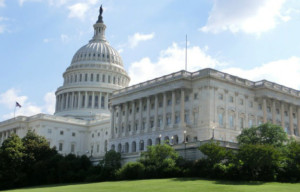PLEASE ASK CONGRESS TO #SAVEH2B
 PLEASE ASK CONGRESS TO #SAVEH2B AND SUPPORT IMMEDIATE CAP RELIEF by signing this online petition on this link.
PLEASE ASK CONGRESS TO #SAVEH2B AND SUPPORT IMMEDIATE CAP RELIEF by signing this online petition on this link.
Many businesses such as those within our racing industry will not be receiving their seasonal guest workers. Without these legal, temporary employees American businesses and workers are in jeopardy.
The H-2B Visa nonimmigrant program allows employers to hire foreign workers to come to the United States and perform temporary nonagricultural services or labor on a one-time, seasonal, peak load or intermittent basis.
H-2B workers are not considered immigrants. In order to qualify for an H-2B Visa, an employer must prove that there are not sufficient U.S. Workers who are capable of performing temporary services or labor.
MYTH: H-2B WORKERS TAKE JOBS AWAY FROM AMERICANS.
FACT: American workers are guaranteed first chance at every job later filled by an H-2B temporary laborer. By law, every open position must be properly advertised in the community and requires employers to hire any able and willing American workers to fill open positions. The fact is that H-2B temporary workers actually support American jobs and the U.S. economy. The H-2B program provides an opportunity for seasonal businesses to operate at a greater capacity, thereby retaining their full-time American workers and contributing more to their local economies. Additionally, temporary foreign seasonal workers help support many upstream and downstream jobs. According to the American Enterprise Institute study on Immigration and American Jobs, every H-2B worker creates or sustains 4.64 American jobs on average.
MYTH: EMPLOYERS DON’T EVEN TRY TO HIRE AMERICAN WORKERS TO FILL THESE TEMPORARY HARD LABOR JOBS.
FACT: Employers work extremely hard to hire American workers because 1) it is dramatically cheaper to do so, and 2) the law requires that employers demonstrate that every effort has been made to hire Americans before they can start the process of trying to hire a temporary foreign laborer. Again, the fact is that the vast majority of American workers are not interested in temporary seasonal manual labor jobs. Geography is a big obstacle for many employers; for example, many resort communities don’t have a sufficient local labor pool. And, in many cases, these types of seasonal jobs may not be appropriate for high school students due to the hours or labor laws that prohibit the use of heavy machinery by minors.
MYTH: PAYING HIGHER WAGES WILL ENTICE AMERICAN WORKERS AND SOLVE THE SEASONAL TEMPORARY LABOR SHORTAGE.
FACT: Hourly pay for these types of jobs have gone up significantly over the last few years because employers who use the H-2B program are required to pay their H-2B workers and similarly employed American workers a premium wage dictated by the U.S. Department of Labor. These temporary manual labor jobs often pay considerably more than the minimum wage, but American workers still won’t take the positions. Sadly, in many cases, employers who obey the law and use the H-2B program are often competing against businesses that choose to illegally hire undocumented immigrants and pay those workers considerably less. If wages were raised even higher, seasonal employers who use the program would not be able to sustain their businesses or their American workers.
MYTH: THE H-2B PROGRAM REPRESSES WAGES FOR AMERICAN WORKERS BY PROVIDING A CHEAPER LABOR SOURCE.
FACT: Hiring H-2B workers is a much move expensive and risky option. In addition to the fact employers are required to pay H-2B workers and similarly employed American workers a premium wage that is often well above the federal minimum wage, complying with the H-2B program is extremely costly, complicated and wrought with uncertainty due to an overly restrictive cap and a constantly changing regulatory environment. Employers turn to the H-2B program as a last resort, after extensive efforts to recruit American workers.
MYTH: H-2B WORKERS OVERSTAY THEIR VISAS AND EXACERBATE ILLEGAL IMMIGRATION IN AMERICA.
FACT: According the U.S. Department of Homeland Security visa overstay in the H-2B program are rare. Workers who do overstay their visas are barred from using the program ever again. The fact is that the vast majority of H-2B workers and their employers are meticulous about compliance. Not following the strict program rules means the end of a well-paying seasonal jobs that allows these workers to provide for their families and still maintain their homes in their native countries – a risk these workers are not willing to take since they generally return to the same employer year after year. Additionally, when approving H-2B visas, the U.S. Consulate confirms workers’ ties to their home countries. Further, the U.S. Department of Homeland Security requires employers to promptly report any H-2B workers who do not report for work or who complete their work earlier in the season than anticipated.
MYTH: THE H-2B RETURNING WORKER EXEMPTION IS UNNECESSARY.
FACT: The H-2B program’s annual 66,000 cap (33,000 for each half of the fiscal year) is not adequate to meet the demands of a growing economy. The cap for the first half of the fiscal 2017 was reached on January 10. The second-half cap was reached on March 13, leaving many seasonal employers shut out of the program with no access to legal seasonal laborers. Without the returning worker exemption passed by Congress with bipartisan support and signed into law by the President, many companies will have to close their businesses, lay off American workers or turn away customers.This provision is essential to the survival of small and seasonal businesses across the country and should be made permanent. An H-2B returning worker exemption is a narrow solution to a seasonal workforce shortage that focuses on workers who are valuable to their seasonal employers and who have never violated the terms of their past visas or other U.S. laws. These workers do not pose a security risk and they are not taking away jobs from Americans.
For more information please visit:
To contribute further, please contact your Congressmen/women and tweet using the hashtag: #SAVEH2B





